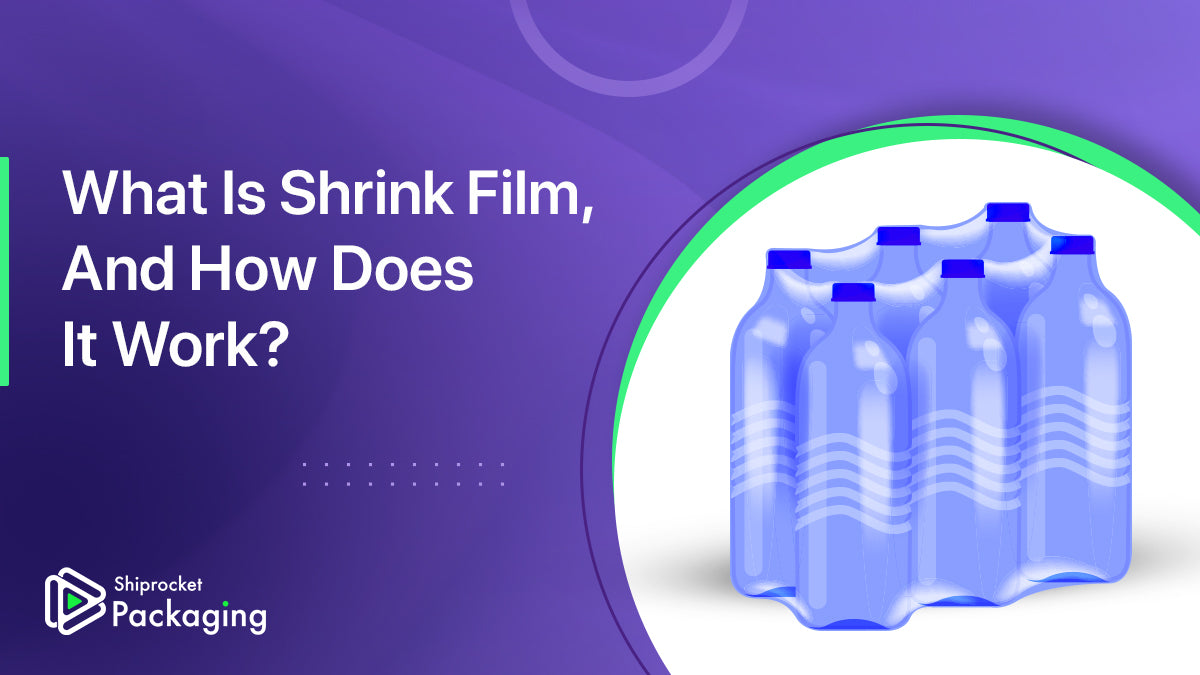Bringing your product to your customer should be a pleasurable experience. How well do your items compare to similar products in the market, from how they seem to feel to how long they last? Shrink wrapping is a simple technique that requires only two things: the correct shrink film and heat. With simply a roll of shrink film and a heat source, you can waterproof, weatherproof, and tamperproof anything, regardless of its size. You'll also be able to give your customers a boost of confidence and stand out with the protective shine of shrink wrap when used correctly!
The Science Behind Shrink
Shrink Film is a versatile polymer material used for finished goods packaging. Heat is delivered to the film through a conveyor heat tunnel or an electric or gas heat gun, catalysing the film to shrink closely around the thing inside. This procedure creates a transparent, long-lasting protective barrier around the goods.
So, how does this take place? Shrink Film is a science that can explain in terms of molecular behaviour. A shrink film sheet or tube's molecules are randomly entangled, which means they are coiled and twisted in no particular order. The structureless areas of the chains are straightened and aligned to the direction of orientation as the film is warmed. To put it another way, the molecules realign themselves from their initial random layout to suit the mould of their contents. The film's molecular characteristics are set when it is suitably chilled. Thus it will remain stretched until enough heat energy is provided to cause the molecule chains to shrink back to their original form.
Versatility
Shrink film comes in various varieties, thicknesses, clarities, strengths, and shrink ratios that can be used separately or in combination to produce the same layering and protection for your goods. Sealability, optics, toughness, slip, temperature, force, and memory requirements have all been addressed by these alternatives and constructions over time.

Characteristics of shrink film for product packaging:
Shrink force
This is usually expressed in PSI and indicates how much force the shrink film will exert on your goods. Understanding your shrink force is essential when packaging a multi-pack that must be firmly contained without being damaged, significantly when modifying your shrink gear. This won't matter if the shrink force is large and you're packaging wood. Polyolefin films have had a high shrink force in the past. Films made of polyvinyl chloride (PVC) have a low shrinkage force. Shrink workforce is minimised using new polyolefin compositions. This may be important if you're packing paper or light chipboard boxes.
Shrink orientation
Bi-axially or preferentially oriented shrink films are available. Bi-axially oriented films shrink in both directions (machine direction and cross direction) at the same rate. The film that is preferentially oriented shrinks differently in both directions. A preferentially orientated film can use less film and reduce product distortion.
Shrink percentages
You can change your shrink percentages by using preferentially oriented film or keep it the same by using bi-axially orientated film, such as 40/40, 30/30, or 20/20.
Yes, the amount of shrink-ability in a film before coming into contact with your product is known as free shrink. This isn't a trick for getting complimentary shrinkwrap, but it's vital. You can achieve a better-looking package on challenging shapes and sizes with high degrees of free shrink.
Resistance to puncture/Tear
This test determines how difficult it is to break the film and how difficult it is to shred it once it has been punctured. Films with strong puncture resistance often have lesser tear-resistance and vice versa. If you must make this trade-off, choose the more important characteristic (e.g., puncture resistance is significant if you have a window box). Choose a shrink film that balances product security and easy access to authentic goods. Keep your shrink wrap in a perfect (but not too cold) storage space until you're ready to use it to avoid the film becoming brittle.
MVTR ( Moisture vapour Transmission Rate)
This feature determines how much moisture will or will not pass through the film. If low moisture transfer into or out of your package is vital for shelf life, you should pay attention to this feature. You should think about modifying atmospheric packaging to lessen or eliminate fog.
Antifog
Antifog films are used on food (both fresh and frozen) to prevent moisture from forming on the film's surface.
Moisture can generate fog, making it difficult to see the product through the film. (You can guarantee that if I'm buying something, I'll skip past the fogged-up packaging and go straight to the one with the product I can see.)
Odour Barrier
Odour barrier films keep undesirable odours from entering or exiting your shipment. Don't let your customers down after they've purchased your stuff by giving it a foul odour.
Conclusion
Shrink film wrapping is a simple technique to protect the safety of your items. It provides flexible packaging film solutions to ensure that your product is completely covered. There is a shrink film to meet every business demand, whether toughness, recyclability or sustainability.
